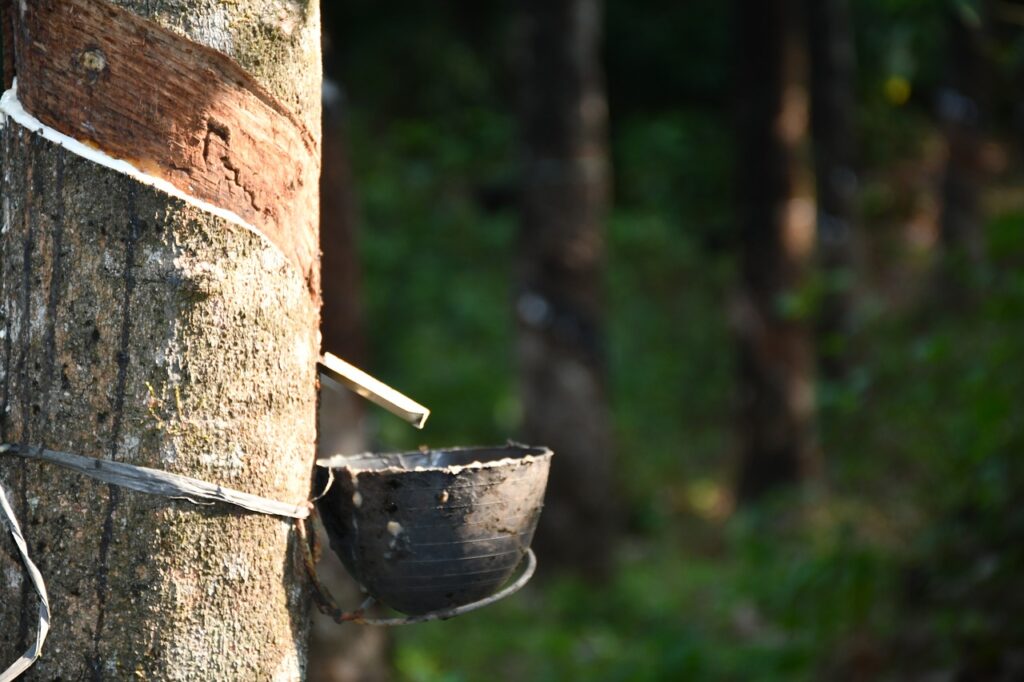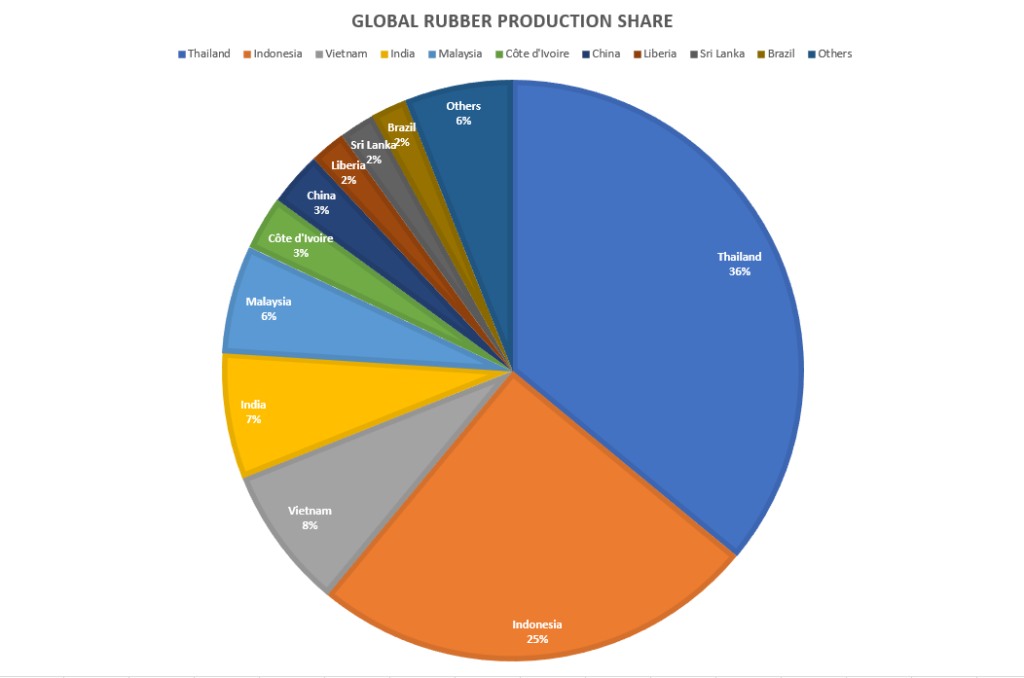For historical information, the smuggling of rubber tree seeds from Brazil to Asia occurred in the past in the late 19th century and played an important role in the development of the rubber industry outside the continent of South America, eventually saving the modern human era from a wide range of products and services being used in our daily life which couldn’t be possible without the nature’s versatile material, i.e., rubber plant.
History: Smuggling of Rubber Tree Seeds
The rubber tree is native to the Amazon rainforest in South America, mainly in Brazil, and therefore, Brazil holds a monopoly on world rubber production. The rubber tree produces latex, an opaque white liquid found in the bark, which is harvested to produce rubber. Rubber trees are grown for their latex, which is used to make various products, including tires, rubber bands, gloves, footwear, and many industrial products.
The rubber industry has essential economic significance, providing job opportunities and contributing to the economies of rubber-producing countries in the world. In the early 1870s, English explorer Henry Wickham managed the smuggling of rubber tree seeds (about 70,000) out of Brazil. The seeds are carefully packed and shipped to the UK. Many of these seeds survived the journey and were transported to British colonies in Southeast Asia, especially British Malaya (now Malaysia) and Ceylon (now Sri Lanka).

Rubber Tree Blight
In the early 20th century, the South American leaf blight fungus was accidentally introduced into rubber plantations in Brazil. The disease quickly spread throughout the region, affecting mainly rubber trees (Hevea Brasiliensis) that are widely planted. Leaf blight in South America has severely damaged rubber trees by infecting their leaves, which are vital for photosynthesis and latex production.
This fungus causes defoliation, reduced latex production, and eventually leads to the death of many rubber trees. This had a profound impact on the Brazilian rubber industry, as it drastically reduced output and made it economically unviable.
Control of blight in South America has proven difficult due to the fungus’ ability to spread rapidly through spores carried by wind, rain, or human activities. Traditional control methods, such as pruning infected leaves or using fungicides, have not been able to completely eradicate the disease. Due to the devastating impact of leaf blight in South America, Brazil’s dominance in the global rubber market has decreased significantly. Rubber production has shifted to other regions, especially Southeast Asia and that was all result of this Clandestine Journey i.e. the smuggling of rubber tree seeds.
Leaf Blight Quarantine Norms
Before the smuggling of rubber tree seeds, Brazil monopolized the production of rubber, mainly concentrated in the Amazon rainforest. Success in illegal seed transportation has allowed rubber tree plantations to be established in other areas, especially in Southeast Asia, which have proved very suitable for rubber plantations. This diversification of rubber production increased the risk of dependence on a single region and played an important role in meeting global rubber demand in the early 20th century.
Then, leaf blight quarantine standards are regulations and measures taken to control the spread of blight and prevent their entry or movement between geographical areas. These standards aim to protect agricultural crops, natural ecosystems, and the overall health of plant populations. However, specific quarantine standards may vary by country and region.
Nature’s Versatile Material as a Commodity
The production of rubber as a commodity is shared by several countries in the world. Thailand is the largest natural rubber producer, followed by Indonesia, Vietnam, India, etc., accounting for a large market share in the global rubber supply. The country benefits from favorable climatic conditions and extensive rubber plantations. Southeast Asian countries alone have contributed more than 75% of the world’s rubber production as a raw material. It is important to note that these numbers are approximate and may vary from year to year due to factors such as weather conditions, market demand, and fluctuations in production levels.
The following picture will let you analyze the global rubber production share by different nations.

